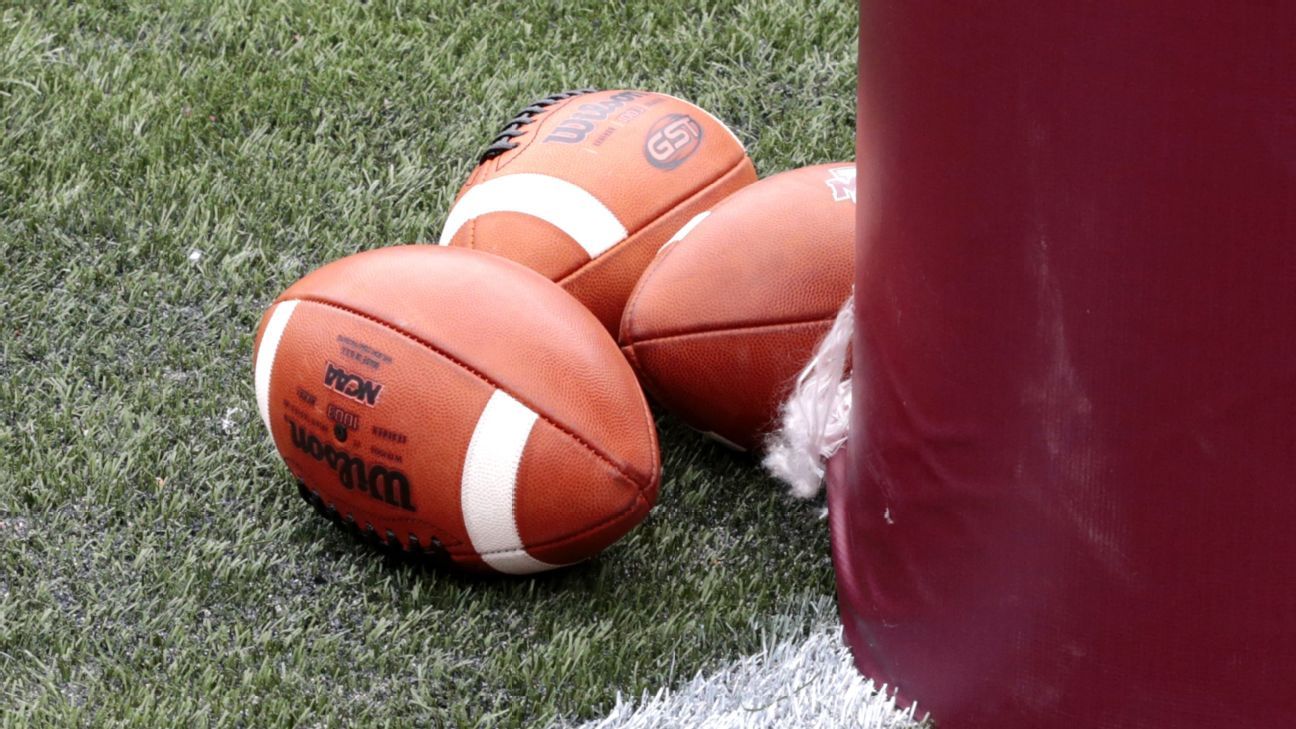Some pro prospects in college football are reaching into their own pockets and taking out sizable loans in order to offset the cost of permanent and total disability policies and loss-of-value insurance riders that would typically be paid for in large part by a fund distributed to schools by the NCAA.
Due to the cancellation of winter and spring championships because of the coronavirus, including the NCAA basketball tournament, the NCAA reduced its distribution to Division I conferences and schools by about $375 million to $225 million. As a result, the Student Assistance Fund, which helps to pay for things like insurance, clothes, computers and other necessities, was slashed from $87.1 million to $27.3 million, which is divided among schools based upon a formula that takes into account different factors such as the number of athletes receiving Pell grants.
It’s at the school’s discretion how that money is spent. Since 2014, schools have been able to use those funds to pay insurance premiums.
One prospect from a Big 12 school, who spoke to ESPN on the condition of anonymity, said he was told before the pandemic that the college he attends would be covering the entirety of the premium for his permanent and total disability policy, which cost approximately $30,000 and would provide him $3 million in coverage if he were to sustain a career-ending injury. Then the coronavirus swept across the country and everything changed.
The player said he was told recently that the Student Assistance Fund had been reduced and that the school would only be able to provide $5,000 toward the insurance premium, leaving him to take out a loan for the remaining $25,000.
The player fears the risk of playing during the pandemic, citing potential side effects of COVID-19 such as reduced lung capacity. What’s more, he said a lack of a normal offseason conditioning program could lead to more injuries than normal.
“So you can’t even grant me protection on the field?” the player said of his school. “Even though this is a sport, we feel like essential workers. And we’re not getting paid and we’re not getting any type of benefit — nothing. We’re just here in the midst of it all.”
Eric Chenowith, who owns and operates Leverage Disability and Life Insurance Services and placed more than 70 college football and college basketball policies last year, told ESPN that he’s experienced similar issues of college athletes not getting the usual support from schools to pay premiums and taking out loans to make up the difference.
One broker, who spoke on the condition of anonymity in order to preserve relationships with universities, said he has three different clients from the ACC who are taking out loans of roughly $20,000; one player was denied any financial assistance from his school while the two others were being given 50% of the cost of a permanent and total disability policy and nothing for a loss-of-value rider. “And in the grand scheme of things, loss-of-value is the most important,” the broker said, because PTD is difficult to collect since there are so few career-ending injuries anymore.”
An insurance consultant who works with several Power 5 programs said the combination of a shortfall in the SAF and a fear of unknown revenues in the coming months has caused the shift. “Funds have been significantly reduced,” the consultant said.
Keith Lerner of Total Planning Sports Services in Gainesville, Florida, wrote policies for Florida State’s Jameis Winston, Oregon’s Marcus Mariota, Georgia’s Todd Gurley, Miami’s Frank Gore and others in the past. The Winston insurance package was reportedly $10 million — $5 million in disability and $5 million in loss of value — and Florida State paid a $55,000 premium for one year of coverage during Winston’s sophomore season in 2014, a year after he guided the Seminoles to a national championship and won the Heisman Trophy.
Lerner said that in the past five years, the SAF has increasingly become a source that many schools have used to pay for players’ insurance policies. He called it a “major recruiting tool for the five-star student-athletes” and that occasionally he’ll have parents of high school seniors inquire with him about which schools may and may not pay the premiums.
“There’s going to be less money this year, and I think it’s going to be a conference-by-conference deal,” he said.
“We have had some players who have inquired and said they would have to foot the bill themselves. We explain to them, ‘Look, the disability insurance is protecting them.’ If the school is able to do it, that’s a nice benefit. But if not, it’s still something important to have in order to protect your career. End of the day, a player has to make a decision, whether a school is going to kick in or not with regards to insurance.”
Not all players are being impacted, including some who took out policies and paid their premium before the pandemic. A source told ESPN that Oregon paid the premiums of offensive lineman Penei Sewell and safety Jevon Holland — projected first-round picks — in the spring. However, industry experts said that the majority of draftable football players either take out or renew policies during the summer months.
A Big Ten athletics director told ESPN that the school had paid for insurance policies for its NFL prospects before spring practice.
Brokers said players they’ve dealt with from the SEC have had a less difficult time securing funding from their schools. According to SEC associate commissioner Herb Vincent, the conference’s executive committee made the decision this year to fund the SAF at the same levels as last year, using the unrestricted revenues provided by the NCAA.
In an email sent to Division I presidents and chancellors, conference commissioners, athletic directors and other administrators, the NCAA said that unrestricted funds were given to provide latitude to conferences and “stressed the importance of using the distributions to aid college athletes during this current uncertain environment, along with the importance of planning carefully with less revenue.”
Permanent and total disability policies and loss-of-value insurance riders have become increasingly popular in recent years as a tool to mitigate the risk of career-ending injuries. Loss-of-value riders are generally offered only to potential top-15 picks, while permanent and total disability policies can cover Rounds 1-4.
According to Chenowith, top-five NFL draft picks generally qualify for $20 million of permanent total disability with a $7.5 million loss-of-value rider. Picks 5-10 qualify for $10 million PTD and $5 million loss-of-value, and picks 10-15 qualify for $7.5 million PTD and $2.5 million loss-of-value.
Lerner said the premiums, on average, cost about $8,000 to $10,000 for each $1 million in coverage for one year.


